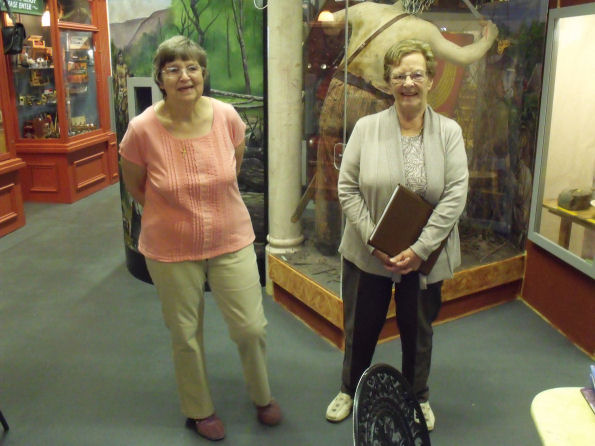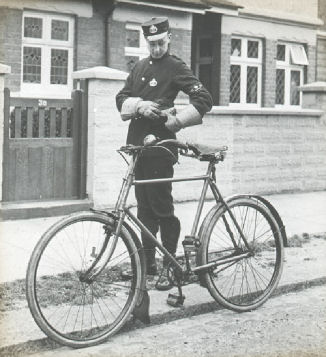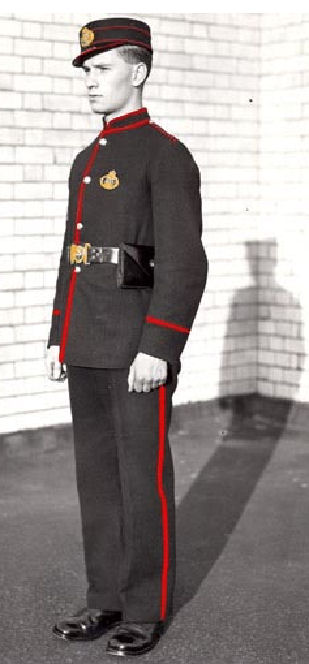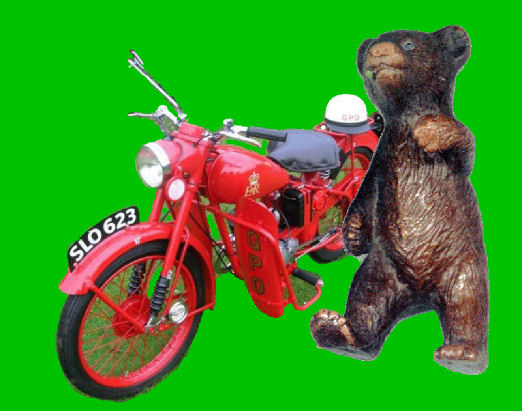Diary Dates
Ongoing – WW1 Exhibition in the Museum
Monday 9th November – AGM at 5pm
Saturday 28th November – Monmouthshire in the Age of Agincourt at Gwent Archives Ebbw Vale £5, ring 01495 353363 for details
Tuesday 1st December – All day Christmas Fayre to coincide with Winterfest
Friday 11th December – Gwent Archives Christmas Lecture (Aneurin Bevan), free, ring 01495 353363 for details
October 100 Club
No. 44 Siân Price £20
No. 92 Margaret Philips £10
No. 14 Val Sykes £5
Coffee Morning – 10th October
Our recent Coffee Morning offered not only an enticing selection of cakes but also a morning of entertainment. Mrs Margaret Cook, a longstanding member of the Museum Society and a talented amateur actress, gave us a selection of light-hearted poems and readings. We were an appreciative audience and marvelled not only at her skill in making herself heard clearly despite various sound effects elsewhere in the museum from time to time as visitors went round the displays, but also the eclectic mix of pieces that Margaret had chosen.

Annual General Meeting
This has been arranged for Monday 9th November at 5pm in the Museum. Please make an effort to come along.
Christmas Fayre
Last year this was arranged to coincide with Winterfest and we are doing the same again this year so please put the date of Tuesday 1st December in your diaries. We are now taking in items for the usual stalls so please bring along choc bars (for crackers), goods for the Lucky Dip, bottles and tins, good bric a brac, toys, bathroom items, craft items, (and cakes nearer the day). We also need helping hands. Keeping the museum open all day requires a considerable amount of manpower and watchful eyes so please help. Contact Peggy at the museum.
Obituary
We were sorry to learn that Mr Bryn Jones died recently. He was a popular man and will be missed.
Fundraising October £280.00
Local Voices
''Rubbing Boards''
I recently watched an edition of the ''Antique Road Show'' on T.V. in which was purchased a ''Washing Board'', the metal part of which was made of a grey coloured metal. When I was a child my mother had one of these but she called it a ''rubbing board'' and the metal part of hers was made of brass. As on the T.V. there was a groove where a big chunk of soap was held. The garment to be washed was placed on the metal part, soap liberally rubbed on to the garment, fist clenched and rub away. Poor old knuckles!!!
The Roving Reporter
“David Thomas”
I was very interested in last month’s ''Newsletter'' when Don gave an account of the life of Mr. David Thomas. Until a few years ago I was very involved with the Museum but although I felt I had to resign from the Committee, I did carry on with a procedure I had undertaken for many years....that was to send a copy of every Newsletter to ''out of town Vice Presidents'' and members. This I did, including one every month to Mr. David Thomas Although I never met him. I feel that I have somehow lost a friend and I shall miss not sending him a Newsletter in the future. What a very interesting life he led. Thank you Don for your article.
The Roving Reporter
“Armenia”
Do you know where Armenia is? I didn't but on looking it up in the atlas found it listed as being in South West Asia, with Georgia to the north, Azerbaijan to the east and Turkey to the west.
I have a lovely friendship with an Austrian couple who live in Vienna. A few days ago I had a post card from them showing a lovely view of a snow capped mountain. The message they sent said it is a very beautiful country with rocky mountains and lovely old stone churches - the Armenians became Christian as far back as 301A.D. The people are very poor, there is very little tourism, hardly any industry and the country is highly dependent on Russia. We tend to think of poverty stricken countries in Africa but they obviously also exist in many areas of the world.
The Roving Reporter (again)!
Christmas Past 1750: Mince Pye
From: The Country Housewife’s Companion; William Ellis, 1750.
How a poor Woman makes palatable Mince-Pyes of stinking Meat.
This is a poor industrious woman that rents a little tenement by me of twenty shillings a year, who for the sake of her poverty is every week relieved, with many others, by the most noble lord of Gaddesden Manour; who killing a bullock almost every week for his very large family, he has the offald meat dressed, and is so good as to have it given away to the poorest people in the neighbourhood. But it sometimes happens, through the negligence of careless servants, that this charitable meat is apt to stink in hot weather, for want of its due cleaning, boiling, and laying it in a cool place. However, the poor are very glad of this dole, as it does their families considerable service. And to recover such tainted meat, this woman, after boiling and cleansing it well, chops and minces it very small, and when mixed with some pepper, salt, chop'd sage, thyme and onion, she bakes it: This for a savoury pye. At another time she makes a sweet pye of this flesh, by mixing a few currants and plumbs with it. But in either form the taint is so lessened that it is hardly to be perceived.
Abertillery Wildlife
I enjoy seeing birds in the garden and have a number of feeders to which I recently added a Perspex feeder box that sticks onto a window. I was pleasantly surprised to see a coal tit using the new feeder within an hour, followed shortly afterwards by a blue tit – both making trips to and from the feeder every few seconds. What a treat to see these birds so clearly while I sat in an armchair just a couple of feet away. It reminded me of how things have changed in Abertillery. The heavy industries, and the many jobs they provided, have long gone. In place of collieries, washeries and the like, there are now green valleys, clean rivers and an abundance of wildlife including birds. And the joy is that you don’t have to have binoculars to see them. We have all seen the ducks at Cwmtillery Lakes, there are dippers to be seen along the river at Abertillery Park, and I can recommend the window box feeders! What has this to do with Abertillery Museum? Well the museum tells the story of the town and the abundance of wildlife we can now see, such as dippers on a clean and clear Ebbw Fach, are also part of the evolving history of Abertillery and District.
Jen Price
Poetry Corner
I saw these words inscribed on a metal plaque at a park in Rhayader.
The kiss of the sun for pardon
The song of the birds for mirth
One is nearer God’s heart in a garden
Than anywhere else on earth.
It comprises the second to last verse of a poem written by Dorothy Francis Gurney (1858-1932) who was a poet and hymnwriter.
The Palmers’ Feast
What is a ‘palmer’? And what is the Palmers’ Feast which features in a stained glass window in the interesting parish church at Ludlow?
On 12th November 1500, a rich Ludlow draper drew up his will which included a bequest of land and buildings, some of the revenue of which was to be used for ‘an honest priest and singers to sing solemnly the masse of Jesus on Fridays for evermore’. The Friday celebration has long lapsed but the memory of the Guild to which Geoffrey Baugh bequeathed his properties is still cherished. The Guild of St Mary and St John was more commonly known as the Palmers’ Guild. A Palmer was a pilgrim who had been to the Holy Land, bringing back a palm branch as proof that he had reached his goal. Few of the Ludlow Palmers went on a physical pilgrimage but all wished to identify themselves with the concept of pilgrimage – a journey through life to ultimate salvation. As you might expect, membership of the guild was largely confined to the upper and middle ranks of society of Ludlow and the immediate countryside but by the later 14th century men and women were enrolled from areas with which the town had trading links, including Wales. At first the Guild employed three or four priests but in 1394 a residential college was built for ten priests. The Guild rebuilt their headquarters – the Guildhall – and eventually owned about a third of Ludlow as well as farms and land elsewhere. Although the purpose of the guild was mainly spiritual there were pecuniary advantages too and the members also involved themselves in charitable enterprises such as the grammar school and almshouses as well as furnishing the church. The dissolution of the monasteries led to the subsequent dissolution of this and similar guilds in other towns.
Pontlottyn and more
To younger residents of Abertillery, the name ‘Pontlottyn’ is synonymous with the pub of that name. To those of us with a few more years behind us, the name is more likely to bring to mind the shop which once occupied the building – one of two department stores and an indication of just how important a town Abertillery was in its heyday. I can still recall the steps to the upper floor in Pontlottyn, with wires criss-crossing the ceiling carrying those little metal pods to and from the cashier. What a sight! Much more interesting than the tubes up which similar metal pods disappeared in Bon Marche on their way to an invisible cashier.
The Morgan and Francis store – the Pontlottyn –was built in1875 and rebuilt in 1897. Bon Marche was developed from a former men’s oufitters to become one of the largest stores in the County, employing about 80 staff. The establishment of these department stores, including prestigous fur departments, reflected the growing prosperity of the town as more coal mines opened and thousands of people moved into the valley. The population of the town already stood at nearly 11,000 in 1891 and by 1911 this had expanded to 35,500. There was money to spend and shops to spend it in. That was before the savage decline in the coal industry and the years of the depression.
Although the town was already much smaller in my childhood years of the fifties, Pontlottyn and Bon Marche were still important shops in the town. The way you shopped then was much different from now. Most of the goods were on shelves behind counters or in drawers in glass fronted displays. You asked to see something and a shop assistant took it out, unfolded it and showed you. No browsing and pulling things about and simply touching things for the sake of it, as we tend to do now in shops. And I seem to recall shop assistants in white blouses and black skirts, or is my imagination playing tricks with me? Both shops were always lavishly decorated at Christmas time, or that’s how it seemed.
I also remember Holman’s Newsagent. What a treasure trove! That was where you went for cards, for all the essentials for a new school year such as one of those trig sets in a metal box (with dividers, compass and set squares), and of course the new pen, preferably a Parker fountain pen. The shop had a really good selection of those! Then the decision on ink colour – black, blue or that one in-between?
Jen Price
Museum Maters
Telegram Boys

In our museum is a red bicycle with a small basket frame once used by GPO Telegram Boys in Abertillery before the use of public or personal telephones.
The Post Office commenced its telephone business in 1878. In December 1880 conversations were, technically within the remit of the Telegraph Act. The General Post Office then licensed all existing telephone networks. The nationalisation of the UK telecommunications industry occurred in 1912 with the takeover of the National Telephone Company only a few municipal undertakings were independent of the GPO (Hull Telephones Department and the telephone system of Guernsey).
Post Office title 'Boy Messenger', more commonly known as a 'Telegram Boy.
 After the Post Office took over control of the inland telegraphs from the railways and private telegraph companies, many of the boys employed by these services to deliver telegrams transferred to the Post Office. A telegram boy was like someone in military service. They were expected to behave in a manner befitting one who wears the uniform of the Queen, and were required to complete a daily drill. From 1915 to 1921, morning exercise was added to these requirements. The G.P.O. allowed the boys to use their own bicycles and were paid 4d a mile, using GPO Bike’s the boys earned fifteen shillings and eight pence, (about 78p) a week. They were supplied with a uniform - navy blue with red piping around the cuffs of the jacket and around the collar and edging, and down the seam of the trousers. This was similar to the postman's uniform, except that they wore a pill-box hat, also with red piping and a red button in the centre of the crown. They were also supplied with shoes for summer, and boots (It gave their ankles the necessary support) and a short cycling overcoat for winter, together with a cycling cape and leggings for rainy days. Not supplied with the uniform, was a black tie.
After the Post Office took over control of the inland telegraphs from the railways and private telegraph companies, many of the boys employed by these services to deliver telegrams transferred to the Post Office. A telegram boy was like someone in military service. They were expected to behave in a manner befitting one who wears the uniform of the Queen, and were required to complete a daily drill. From 1915 to 1921, morning exercise was added to these requirements. The G.P.O. allowed the boys to use their own bicycles and were paid 4d a mile, using GPO Bike’s the boys earned fifteen shillings and eight pence, (about 78p) a week. They were supplied with a uniform - navy blue with red piping around the cuffs of the jacket and around the collar and edging, and down the seam of the trousers. This was similar to the postman's uniform, except that they wore a pill-box hat, also with red piping and a red button in the centre of the crown. They were also supplied with shoes for summer, and boots (It gave their ankles the necessary support) and a short cycling overcoat for winter, together with a cycling cape and leggings for rainy days. Not supplied with the uniform, was a black tie.
They had to present themselves to the Inspector for his daily inspection, and if their shoes or brass buckle and leather belt failed to attain the shine he desired, they were sent home to effect an improvement. The bicycles had to be cleaned weekly, and these were also inspected to see that they were shining well enough to be seen on the streets by the general public. Appearance was of prime importance, they always had to appear to be seen to be correctly dressed. The messengers worked three different 'shifts' which started at 8.00 am, 8.30 am., and 10.00 am and ending at varying times up to 8.00 pm. They also worked a Sunday morning session.
In 1942 few people had telephones compared with the present day, and it was one of the quick means of communication. The telegrams cost 6d for 9 words (2½p) and a penny for each additional word. This included the address as well as the text which resulted in very brief addresses and text as they were often abbreviated considerably to keep them within the minimum fee. Greetings telegrams were in a pale blue envelope with a specially designed form and were 6d extra. Priority telegrams were processed and delivered before all others for an additional fee of 6d. Office’s that did not possess a printer for the telegrams, were sent via a private line, the messages and envelopes were hand written by the staff on duty at the office The procedure on delivery was to hand them to the addressee (not merely push them through the letter box) and wait for the message to be read and take any replies that they wished to send, spare forms were carried in leather pouches for this purpose. They also carried cards which were left if there was no reply, indicating that an attempt to deliver a telegram without success, and that they would try again later.
In their pouches they also carried a rule book which stated that under penalty of disciplinary action they were not allowed to accept any gifts or gratuity. They were however, often given a tip of 6d (2½p) or a shilling (5p) and sometimes if we were lucky, as much as two shillings (l0p). In the 1930s the United Kingdom Post Office introduced motorcycles in Leeds where boys aged 17 were allowed to volunteer for training, but only with the permission of their parents. Following the success of this, motorcycles were introduced elsewhere in the country. The fleet was comprised almost exclusively of BSA B33-1 250cc motorbikes which boys were expected to ride at an average of 15mph. Later 125cc BSA Bantams were used. These were finally replaced with smaller Raleigh, and Puch models. After the war the GPO used BSA Bantams. The telegram was finally taken out of service on 30 September 1982 after 139 years in the United Kingdom.
Don Bearcroft Curator



